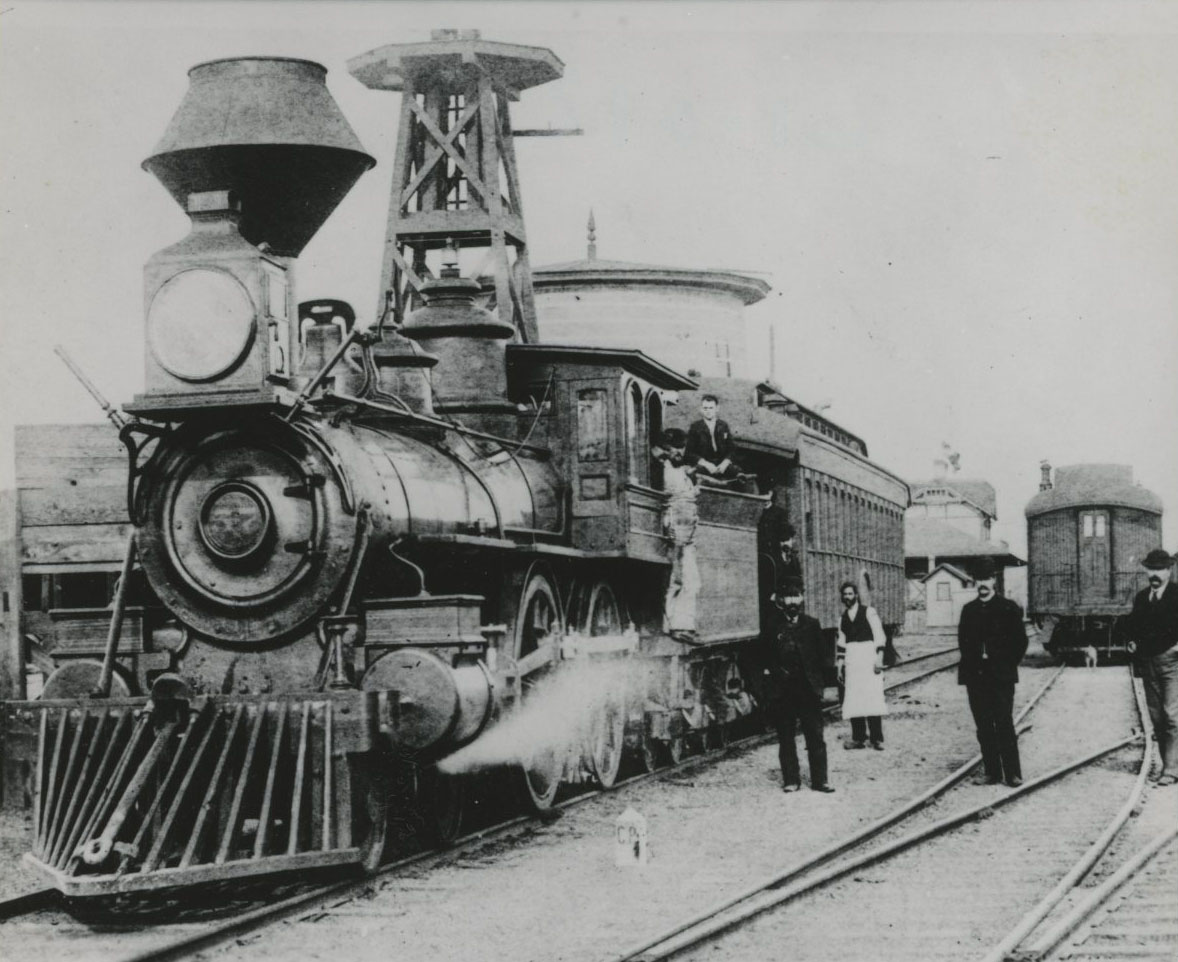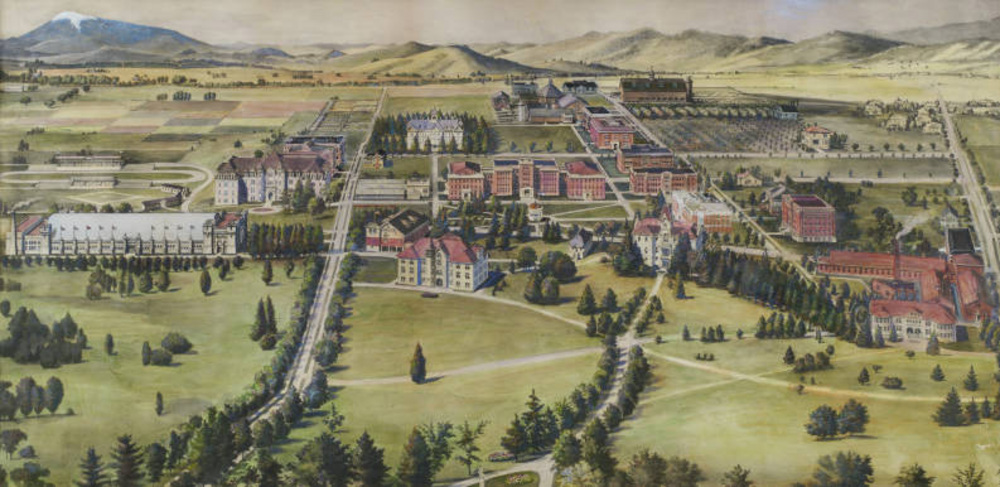Percy Cupper is a good example of the importance of higher education in Oregon, how a child of the state’s high desert frontier could become a primary participant in modern development. While serving as Oregon's State Engineer, he established an important benchmark in Oregon water law.
Born on December 8, 1882, Cupper grew up on a sheep ranch in the John Day River valley, the sixth of seven children in an immigrant family. His parents, Henry and Cordelia Cupper, emigrated from England in 1877 and arrived in Ashland after crossing the country by rail. In 1878, the family journeyed north to Prineville and then to Heppner, where Henry hauled a cargo load to a homestead ranch near Monument. The Cuppers fell in love with the valley, purchased the ranch, and subsequently turned it into a prosperous sheep operation during the heyday of sheep ranching in eastern Oregon. The Cuppers’s success eased Percy’s pursuit of education and his eventual prominence as a state official and early irrigationist.
Percy Cupper completed schooling in Monument and entered Oregon Agricultural College (now Oregon State University) in 1900. He received a B.S. degree in civil engineering in 1904 and played on the college football team from 1901 to 1904. A loyal college alumnus, Cupper served as president of the OAC Alumni Board from 1915 to 1917.
Cupper's career in hydrology and reclamation work began fresh after graduation, when he conducted hydrological surveys for the U.S. Reclamation Service. He also worked briefly as a surveyor on the Oregon Railway and Navigation Company/Union Pacific line. In 1905-1906, he went to work for the State of Oregon, surveying surface waters in the upper Walla Walla River Basin in northeast Oregon.
By 1907, Cupper had moved to Salem and married L.M. Christiansen of Milton, Oregon. While working as a private consultant, he studied law at Willamette University, graduating in 1910 with an L.L.B.
With degrees in engineering and law, Cupper quickly became one of the most successful consultants and water lawyers in the state. His expertise and reputation led him back to work for the State of Oregon as a deputy to the state engineer. By 1918, he was the state engineer, with responsibility for monitoring irrigation projects begun under the federal Carey Act. In that capacity, he served as secretary of the Desert Land Board.
In 1912, Cupper co-authored an important investigative report on a proposed major dam at The Dalles, the first Oregon-sponsored proposal for a multipurpose dam on the Columbia River. In 1918, he argued successfully before the U.S. Supreme Court in Pacific Livestock v. Lewis, prompting the majority opinion that established Oregon’s Water Board authority to adjudicate division of water for irrigation on the state’s streams and rivers. Following on his legal success, Cupper also wrote a seminal document, Irrigation Laws of Oregon (1919), which became a mainstay among reclamationists through the 1950s.
By 1924, Cupper had left the position of state engineer and formed a consulting firm, Cupper and Simpson, in Salem. He advised irrigation districts on water law and reclamation regulations. In that work, Cupper became an important proponent and advisor to the Deschutes Project Association. During the 1930s, Cupper was attorney for the Jefferson Water District and was heavily involved in lobbying for the North Unit on the Deschutes Irrigation Project in central Oregon. He remained active in irrigation development and reclamation politics until his death in June 1943. He is interred in the Mount Crest Abbey Mausoleum in Salem.
-
![]()
Percy Cupper at his graduation from Willamette University, 1910.
Oregon Historical Society Research Library, 0065g015
-
![]()
"Engineer Gathers Data," Morning Oregonian, Sept. 29, 1916.
Courtesy Portland Oregonian
-
![]()
"Cupper Fills Two Positions," Oregonian, June 22, 1917.
Courtesy Portland Oregonian
-
![]()
"Who's Who at Statehouse: Percy Cupper," Morning Oregonian, Nov. 1, 1919.
Courtesy Portland Oregonian
Related Entries
-
![John Day River (north-central Oregon)]()
John Day River (north-central Oregon)
The 281-mile-long John Day River in north-central Oregon is the longest…
-
![Oregon Railway & Navigation Company]()
Oregon Railway & Navigation Company
Recognizing the opportunity to monopolize access to Oregon by the trans…
-
![Oregon State University]()
Oregon State University
Oregon State University (OSU) traces its roots to 1856, when Corvallis …
-
![The Dalles Dam]()
The Dalles Dam
The United States Army Corps of Engineers constructed The Dalles Dam be…
-
![Willamette University School of Law]()
Willamette University School of Law
In July 1866, the Reverend Luther T. Woodward reported to the Willamett…
Related Historical Records
Map This on the Oregon History WayFinder
The Oregon History Wayfinder is an interactive map that identifies significant places, people, and events in Oregon history.
Further Reading
Leonard, John William, Winfield Scott Downs, and M. M. Lewis, eds. Who’s Who in Engineering, 1922-23. Brooklyn, N.Y.: John W. Leonard Corporation, 1922.
Lewis, John. Irrigation in Oregon: U.S. Department of Agriculture, 1909.
Lovin, Hugh T. “Arid Land Reclamation in Eastern Oregon during the Twentieth Century.” Pacific Northwest Quarterly 100 (Fall 2009), 169-180.
Robbins, William G. Landscapes of Promise, The Oregon Story 1800-1940: University of Washington Press, 1997.









